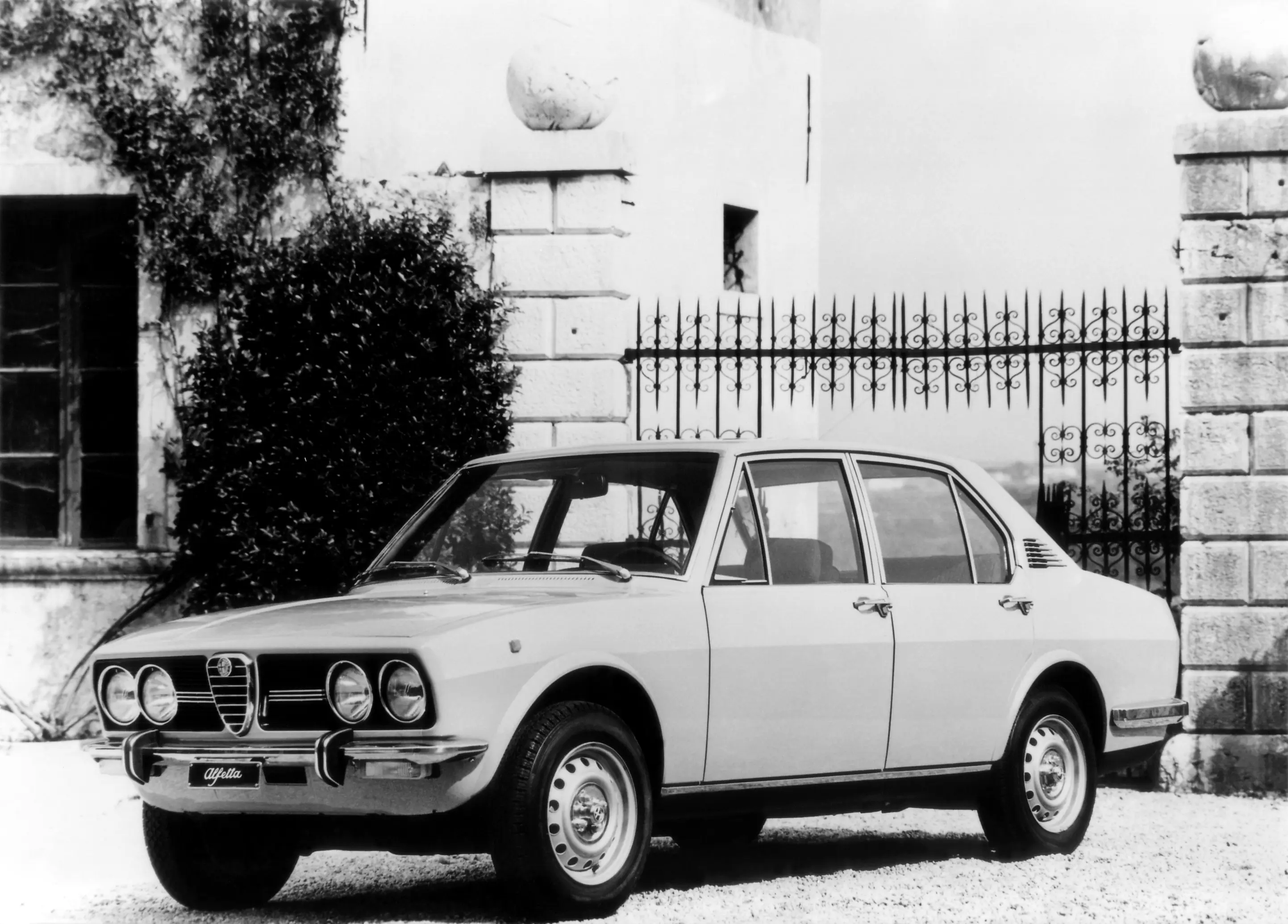THE ALFA ROMEO ALFETTA BERLINA – A CELEBRATION
09 March 2022
Of the many cars celebrating their 50th birthday this year, it would be very wrong to overlook the Alfa Romeo Alfetta. In the 1970s, it was the vehicle of choice for the sort of middle-class driver who might have also considered the Triumph Dolomite, Lancia Beta or the BMW 2002.
Technically the Alfetta was unusual in having a five-speed gearbox, clutch and differential as a unit at the rear, and, unlike its stablemates, rack & pinion steering. Power was from a 1,779cc DHOC engine capable of 112 mph with 0-60 in 10.8 seconds. The styling by Centro Stile Alfa Romeo was low-key; Italian bourgeoisie motorists tended to opt for saloons with a restrained appearance.

Alfa Romeo commenced work on the ‘Tipo 116’ in 1967, and they intended the Alfetta, which used the name of the famous 158/159 Grand Prix cars, to bridge the gulf between the Tipo 105 Giulia and the 2000 Berlina. But unfortunately, its launch at the end of 1972 was marked by industrial disputes. Full production did not begin until the middle of 1973.
UK sales did not commence until Spring of the following year, where a £2,449 price tag meant it was slightly more expensive than the Dolomite Sprint and the Audi 100 GL. However, the specification included an adjustable steering column, a cigar lighter mounted by the driver’s left kneecap, very ‘1970s’ cloth upholstery and even a hand throttle.
Clive Richardson of Motor Sport thought the Alfetta fun to drive quickly while “100-mph cruising is effortlessly maintained”. Autocar praised the gearchange and the “pleasant taut feel at all speeds”. As for Autosport - “the Alfetta brings the silence and refinement of large and expensive cars into the under 2-litre class, and excels most of them for roadholding and ride”.
In 1977 the 2000 Berlina was replaced by the Alfetta 2000, which sported rectangular headlamps and new wheels. Car evaluated it opposite the Renault 20TS and the Saab 99 GL, and although preferring its predecessor, they still found the Alfetta “a true thoroughbred Alfa”. Mr. Richardson believed, “It carries the prestige of the Alfa badge and all the engineering delights which go with it, yet wrapped in a pleasingly conservative package”. Furthermore, it was “excellent value at £4,799”.
The 2000 gained fuel injection in 1979 and a facelift in 1983. Production ceased in 1984 with the debut of the 90. This was an upgraded Alfetta that served as a stopgap before the launch of the 164 in 1987. Today, the GT/GTV coupes seem to be remembered, while the Alfetta Berlina seems forgotten. It deserves far better, as both a true Alfa Romeo and a highly entertaining sports saloon.
As Car of August 1974 put it – “the Alfetta compares favourably with the S class Mercedes. And in case you have not got the message, that puts the Alfetta on the same rung as the best saloon in the world”.
